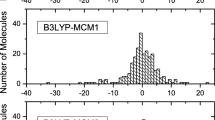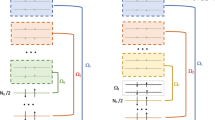Abstract.
The use of Fukui functions for the site selectivity of the formaldehyde molecule for nucleophilic, electrophilic and radical attacks has been made with special emphasis to the dependence of Fukui values on the basis sets as well as population schemes in the framework of B3LYP theory. Out of the five population schemes selected viz., Mulliken population analysis, natural population analysis, CHELP, CHELPG and atoms in molecules (AIM), it is found that the CHELPG and AIM schemes predict precise reactive site with less dependency on the basis sets. Charges derived from Hirshfeld partitioning, calculated using the BLYP/dnd method (implemented in the DMOL3 package), provide non-negative Fukui values for all the molecular systems considered in this study. Supporting results have been obtained for acetaldehyde and acetone molecules at the 6-31+G** basis set level. These results support the fact that high Fukui values correspond to soft–soft interaction sites. On the other hand, the correlation of the low Fukui value to the hard–hard interaction site merits further investigation.
Similar content being viewed by others
Author information
Authors and Affiliations
Additional information
Received: 10 November 2001 / Accepted: 6 March 2002 / Published online: 13 June 2002
Rights and permissions
About this article
Cite this article
Thanikaivelan, P., Padmanabhan, J., Subramanian, V. et al. Chemical reactivity and selectivity using Fukui functions: basis set and population scheme dependence in the framework of B3LYP theory. Theor Chem Acc 107, 326–335 (2002). https://doi.org/10.1007/s00214-002-0352-z
Issue Date:
DOI: https://doi.org/10.1007/s00214-002-0352-z




